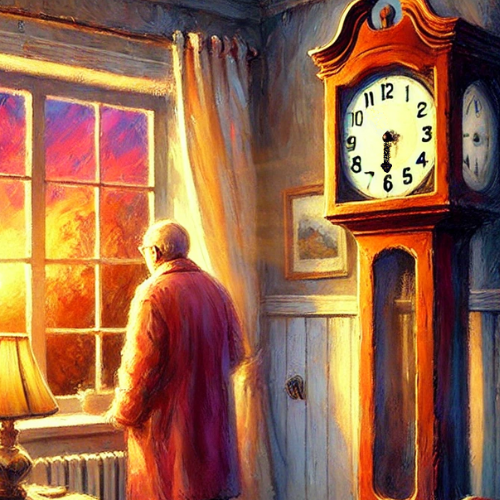Preparing for Daylight Saving Time and Sundowning Syndrome
Share This Story
As the clocks change and daylight saving time ends, many […]
As the clocks change and daylight saving time ends, many families supporting a loved one with dementia find that seasonal shifts in light can exacerbate sundowning syndrome. This neurological phenomenon—marked by increased confusion, agitation, and restlessness, typically in the late afternoon or evening—affects 20-45% of people with Alzheimer’s and other dementias. For caregivers, understanding the causes, recognizing triggers, and establishing effective strategies can make this time of year more manageable.
What is Sundowning?
Sundowning describes a pattern of increased confusion, anxiety, and sometimes physical symptoms, such as pacing or agitation, occurring in the late afternoon or evening. Although associated with Alzheimer’s, sundowning can appear in many forms of dementia, often during the middle stages. Symptoms include confusion, mood swings, irritability, hallucinations, and a general increase in physical restlessness. However, it is important to note that sundowning is not strictly limited to evening hours; similar symptoms may arise earlier in the day due to other factors, such as fatigue or overstimulation.
Understanding Triggers
While the precise cause of sundowning remains unclear, several triggers can worsen symptoms, including:
- Circadian rhythm disruption: The body’s natural rhythm can become imbalanced with dementia, especially as daylight fades.
- Environmental stressors: Shadows, evening noise, and changes in routine can heighten anxiety.
- Fatigue: Both the physical and cognitive fatigue of the day can reduce a person’s tolerance for additional stimulation.
- Sensory changes: Evening dimness and shadow shifts may cause perceptual distortions, leading to agitation or fear.
Preparing for the Time Change
With daylight saving time ending, here are some steps to ease the transition for your loved one and minimize the effects of sundowning:
- Gradually adjust daily routines: Start shifting sleep, meal, and activity times by small increments several days before the time change.
- Create a consistent schedule: Regularity can lessen confusion, so keep activities, meals, and bedtimes as steady as possible.
- Increase daytime light: Use bright, natural light early in the day to reinforce daytime wakefulness and help reset internal rhythms. In the evening, add soft lighting to reduce shadows and ease the transition from day to night.
Managing Sundowning Symptoms
Once sundowning symptoms emerge, responding with calm and supportive actions can help reduce escalation:
- Engage in calming activities: In the late afternoon, offer soothing activities like gentle music, a favorite film, or a simple task, avoiding high-stimulation activities.
- Limit evening food and drink: Try a lighter evening meal to avoid digestive discomfort, and reduce caffeine and sugar, which can interfere with sleep.
- Prioritize exercise: Encouraging daytime physical activity, like a walk or light stretching, can help reduce restlessness.
- Maintain a peaceful environment: Lower TV volumes, dim bright lights, and avoid triggering background noises to create a calm space.
Staying Attuned to Behavioral Cues
Since each person experiences sundowning differently, observe and adapt based on specific behaviors. If your loved one paces, allow it in a safe, supervised area rather than restraining them, which can increase distress. Gentle reassurance and verbal cues, such as “We are safe here,” can provide comfort and redirect agitation.
Consulting Professionals
If sundowning symptoms persist, it may be worth consulting a healthcare provider. They can advise on therapeutic approaches, adjust medication timing, or suggest calming supplements when appropriate. Regular check-ins with your provider ensure the care plan is personalized and effective.
Daylight saving time and the coming winter months bring unique challenges, but with proactive strategies, caregivers can create a supportive, soothing environment that honors the comfort and needs of their loved one living with dementia.

